As I type this article, about half an hour before the polling stations close, forecasters have seen some tightening of the projected number of seats between the Conservatives and Labour. Even yesterday, a Conservative plurality with a difference of a good few seats seemed most likely, there may be a parity between the two parties, at least according to the Guardian website.
Guardian
The Conservatives are down from 276 to 273, whereas Labour has gone up from 269 to 273 (picking up three seats from the Conservatives and another from the SNP), in comparison from yesterday, and resulting in a parity.
6 May 2015
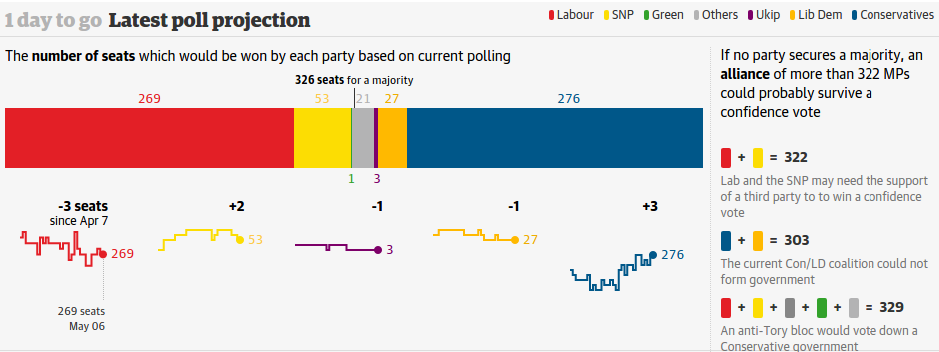
Source: Guardian
7 May 2015
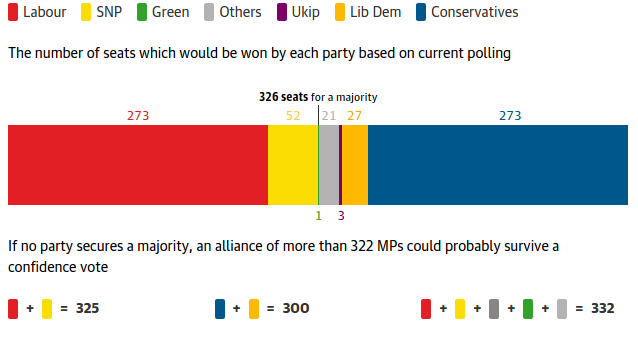
Source: Guardian
Election Forecast
On www.
6 May 2015
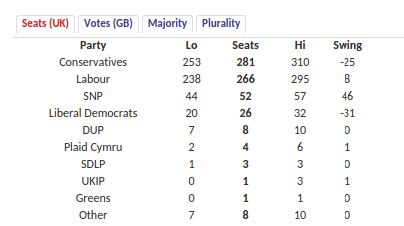
Source: 2015 UK Parliamentary Election Forecast
7 May 2015
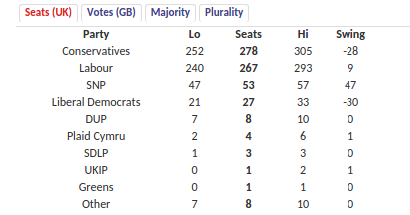
Source: 2015 UK Parliamentary Election Forecast
Electoral Calculus
On www.
6 May 2015
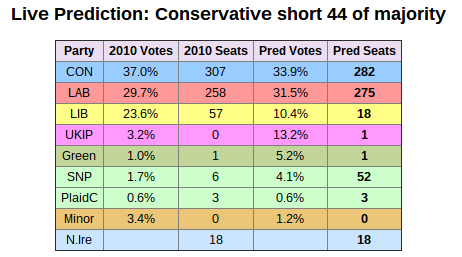
Source: Electoral Calculus
7 May 2015
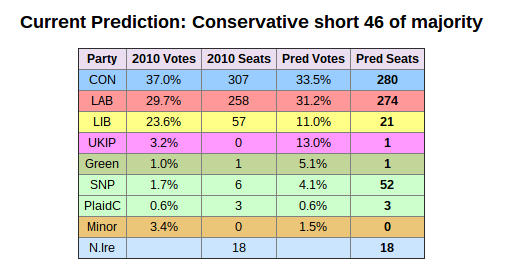
Source: Electoral Calculus
It will require a brave soul to call it at the moment, because very tight results – and there is bound to be a few – in a number of constituencies can really influence the outcome, and the resulting political narrative. Will the exit polls be wildly different? We are in for a long night.
